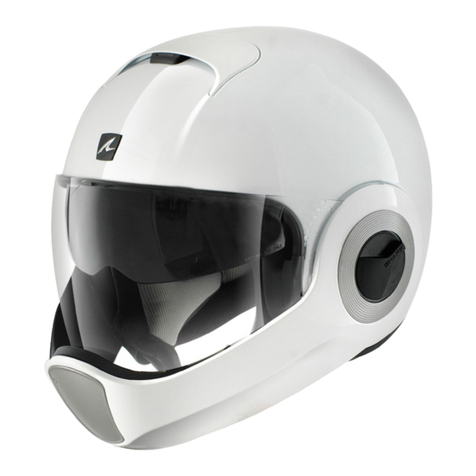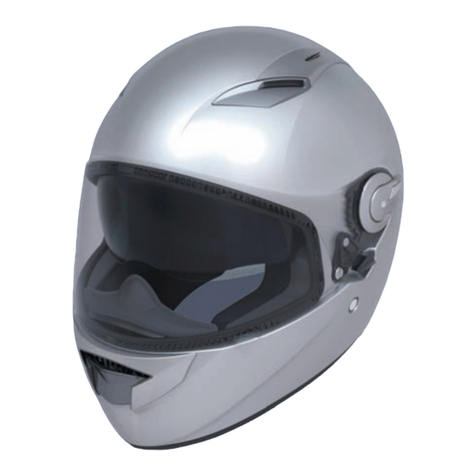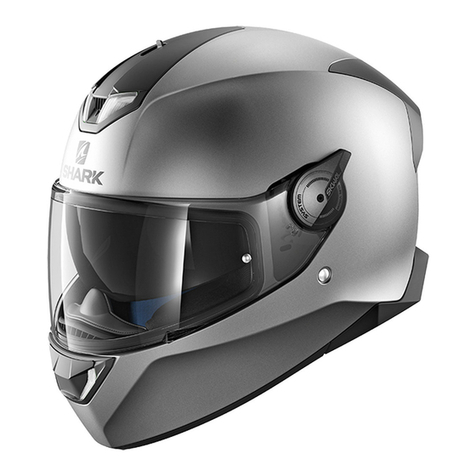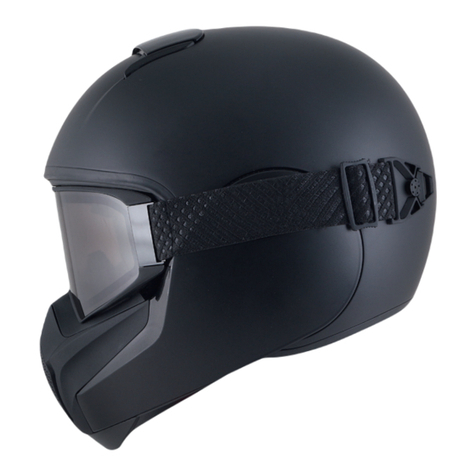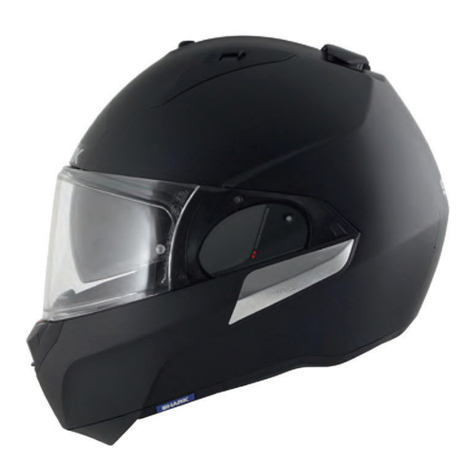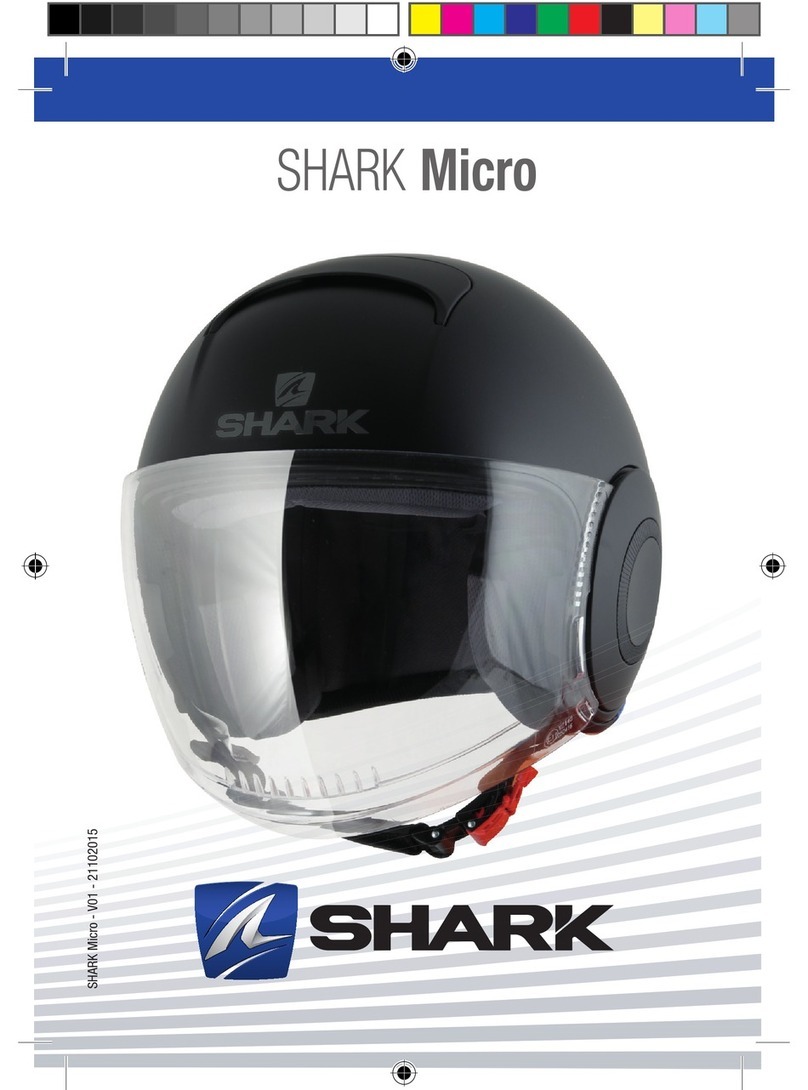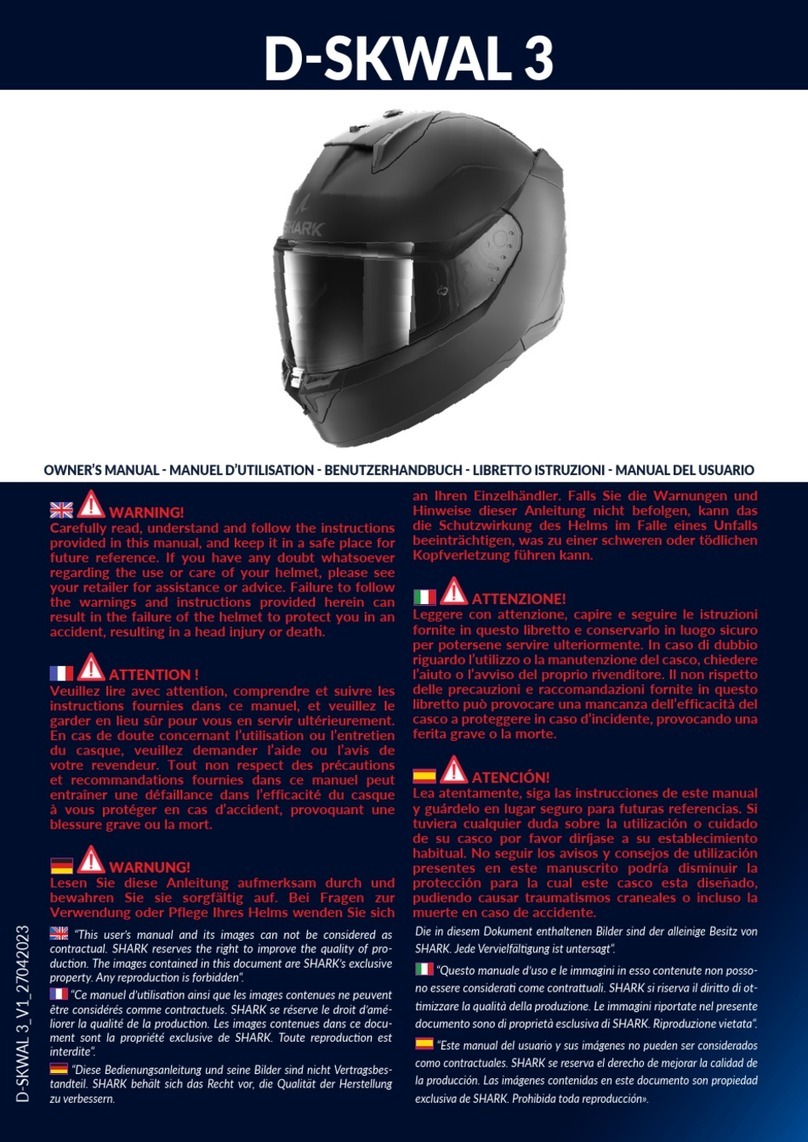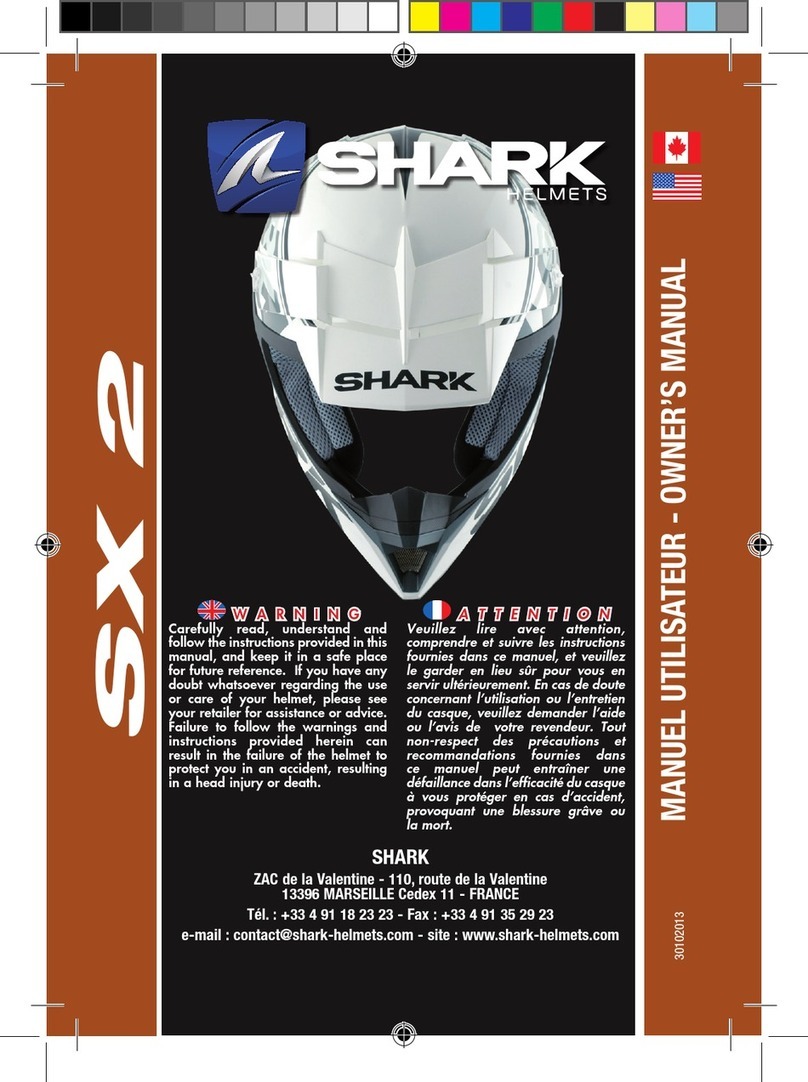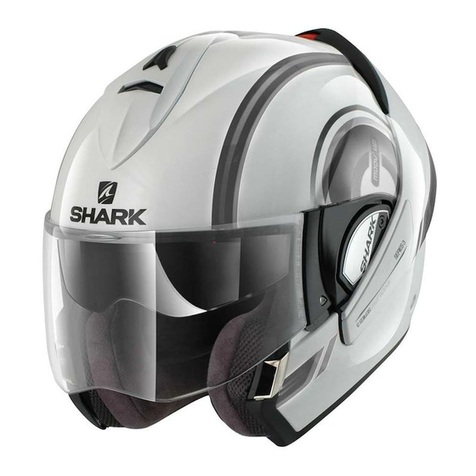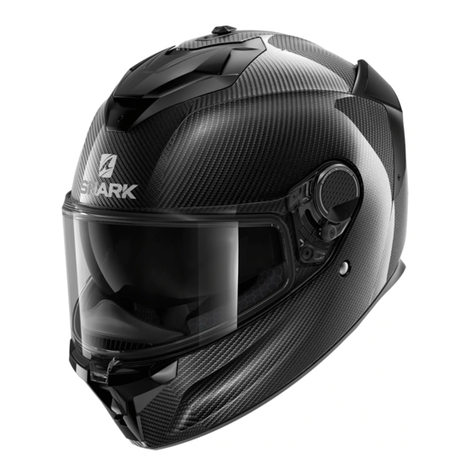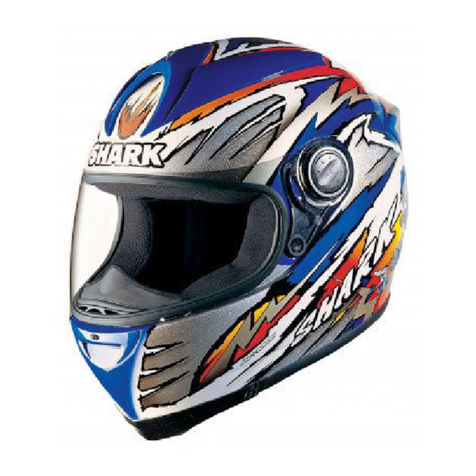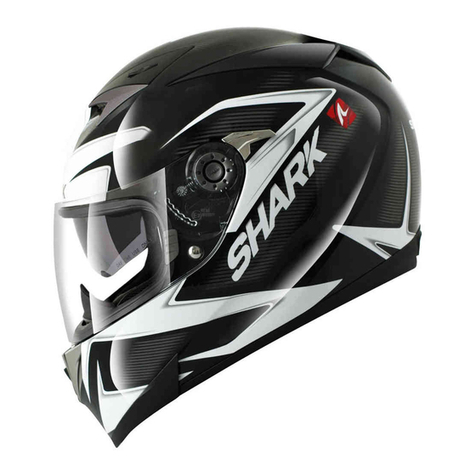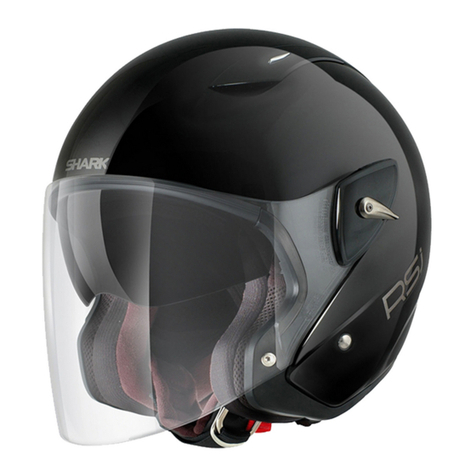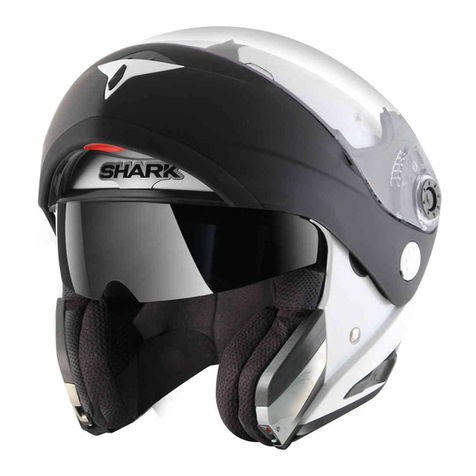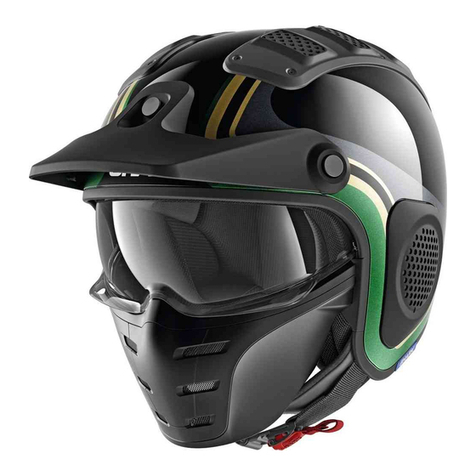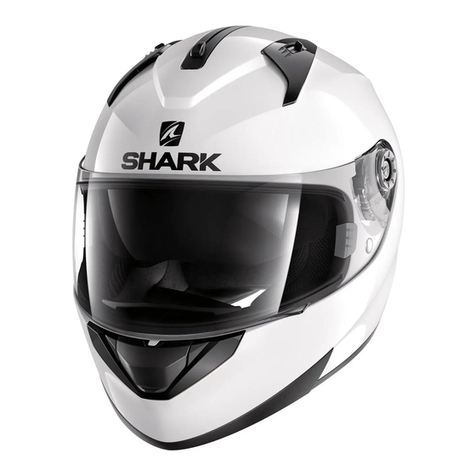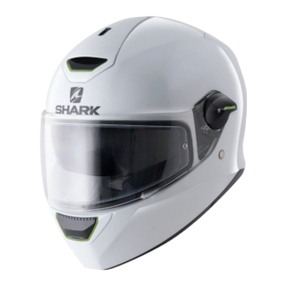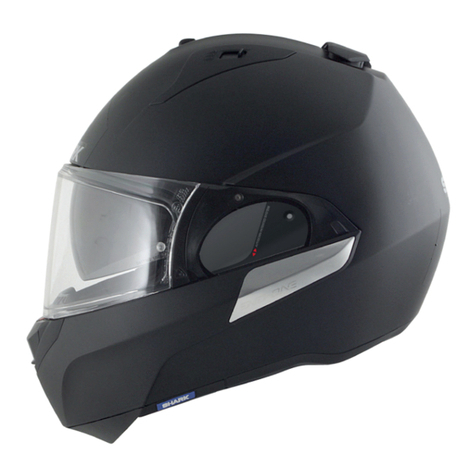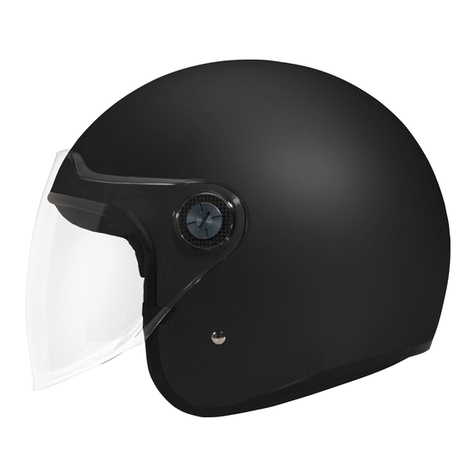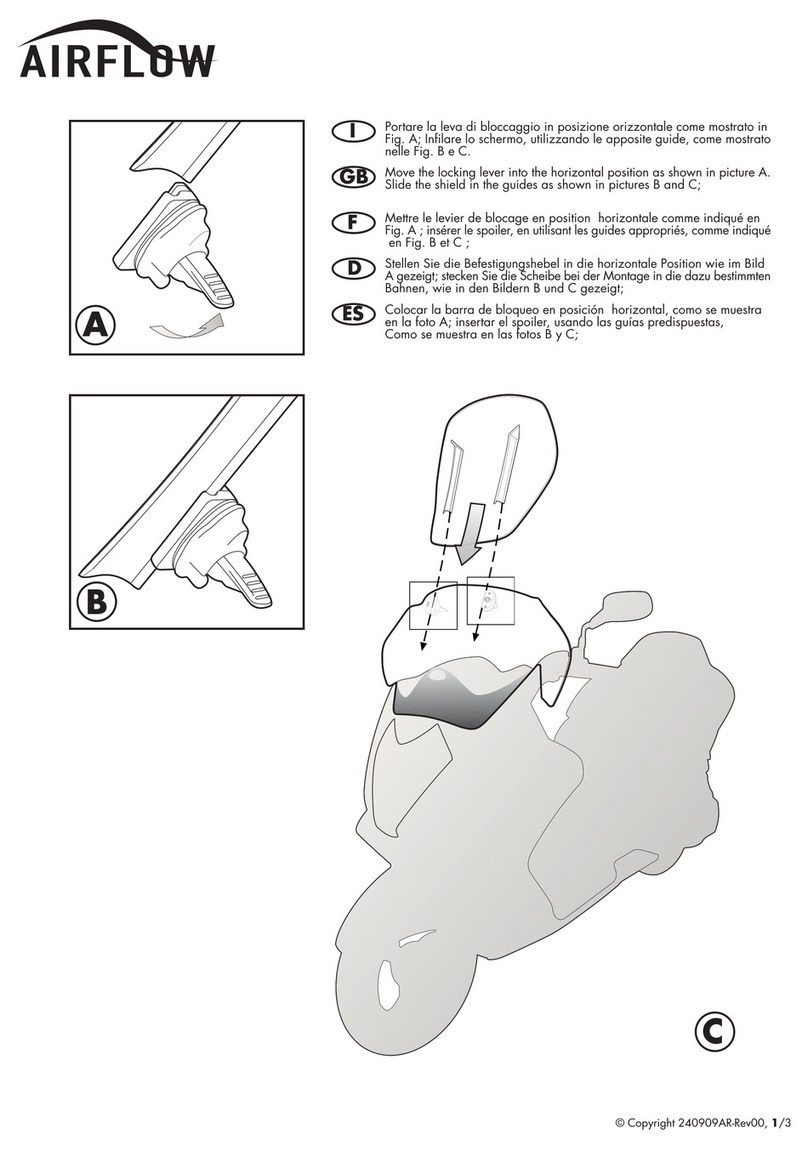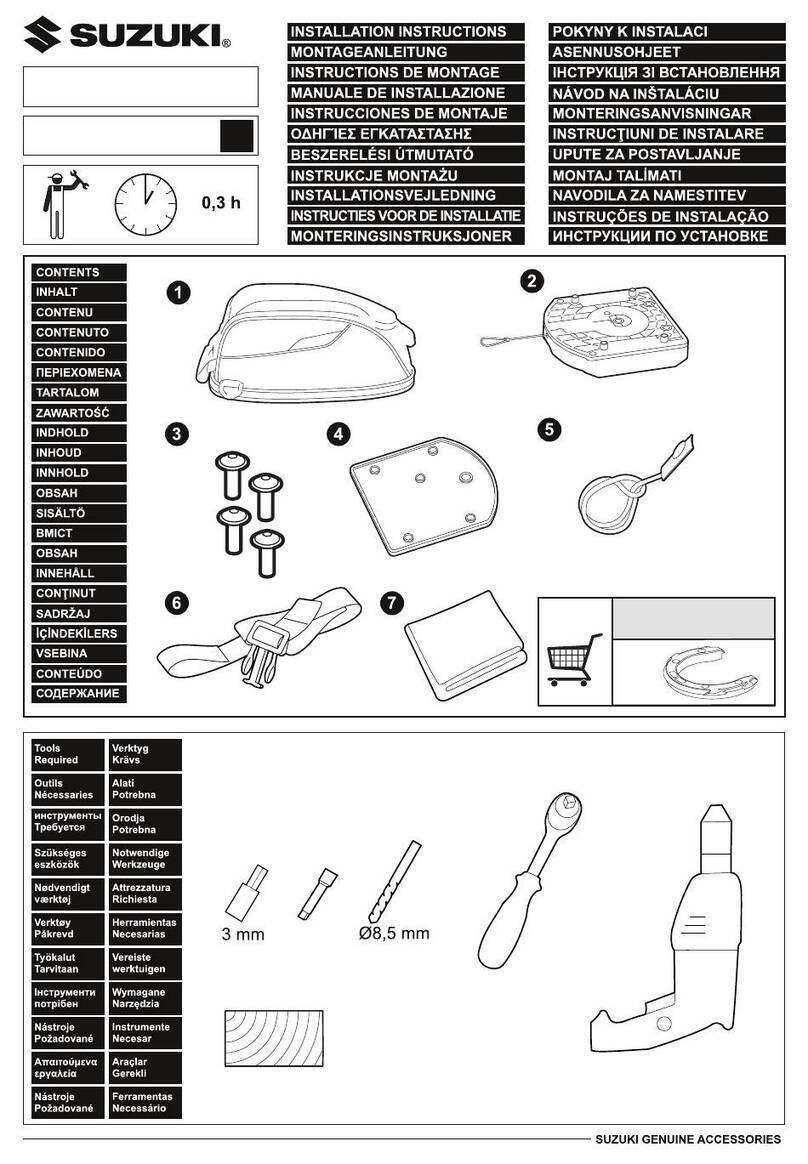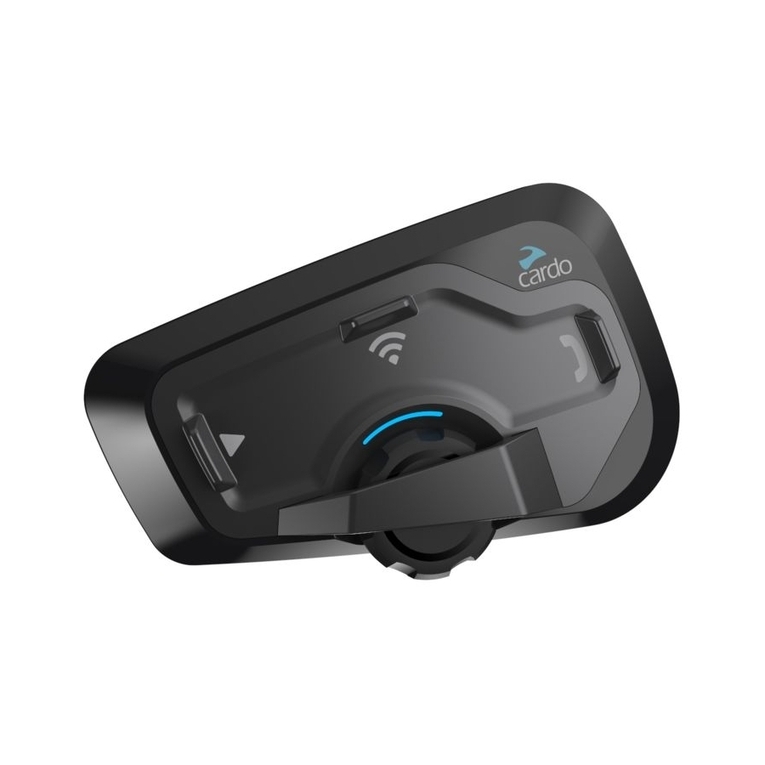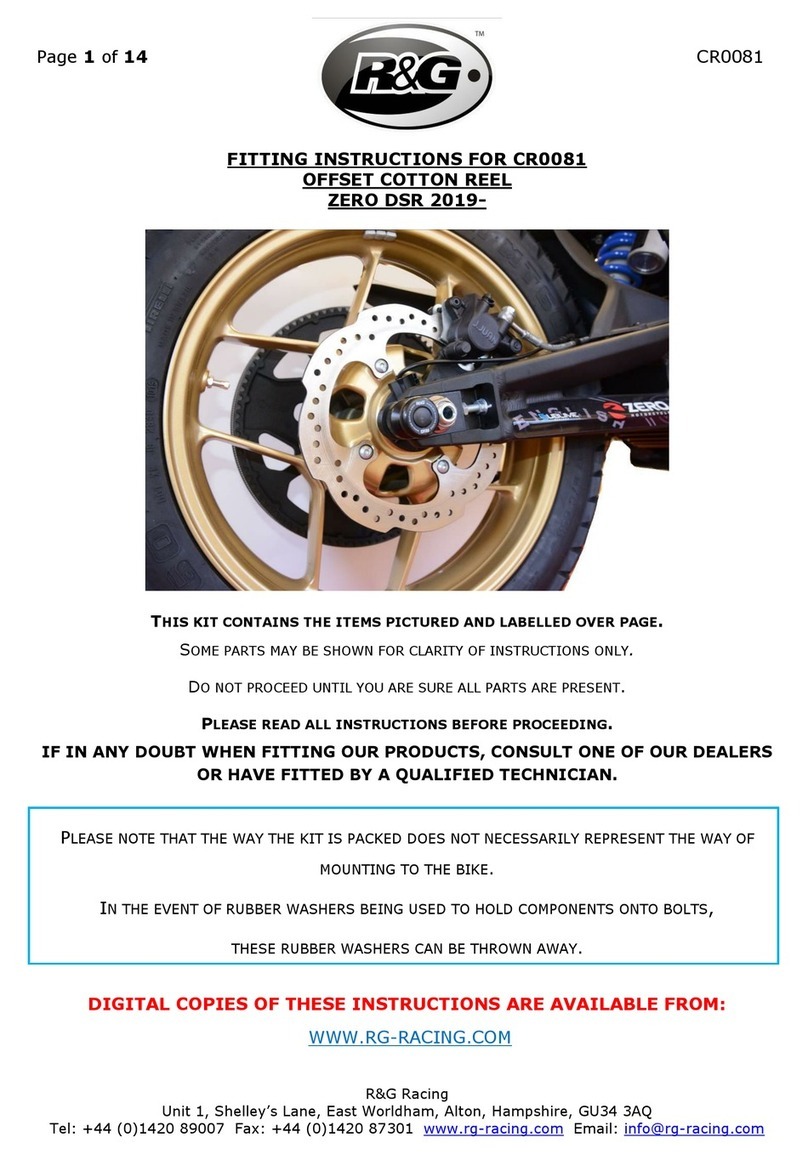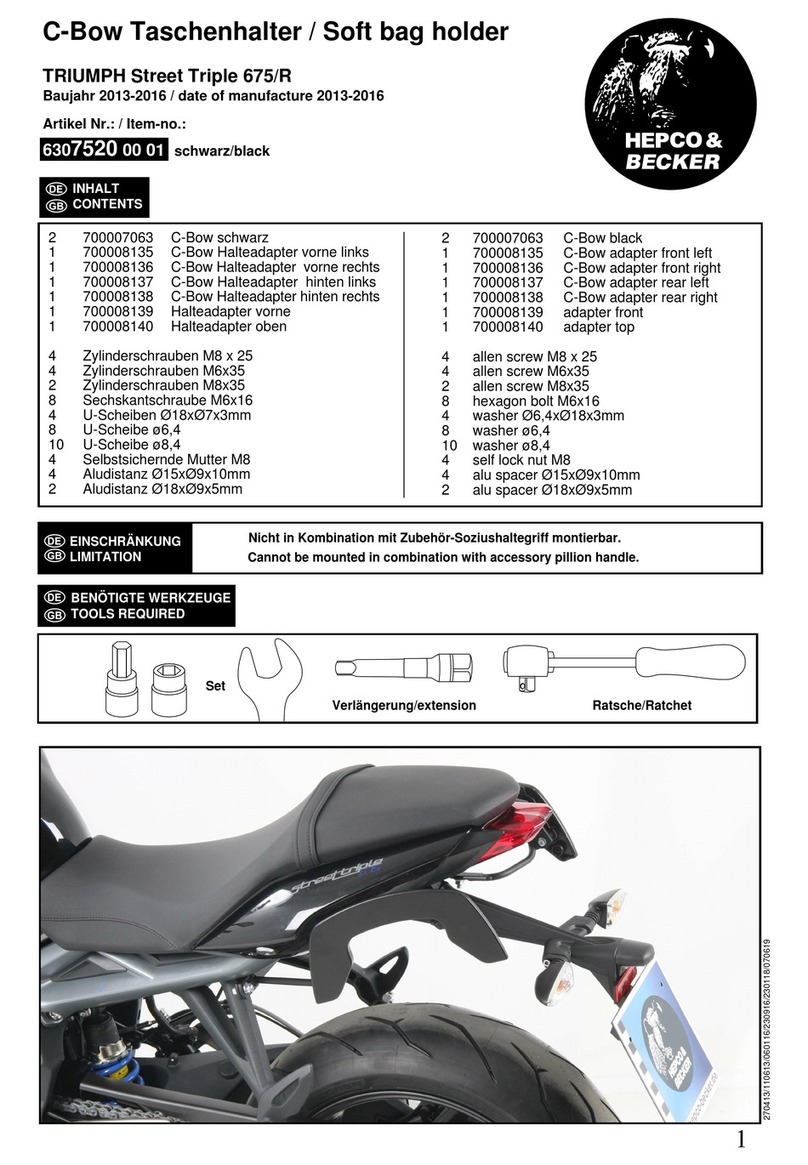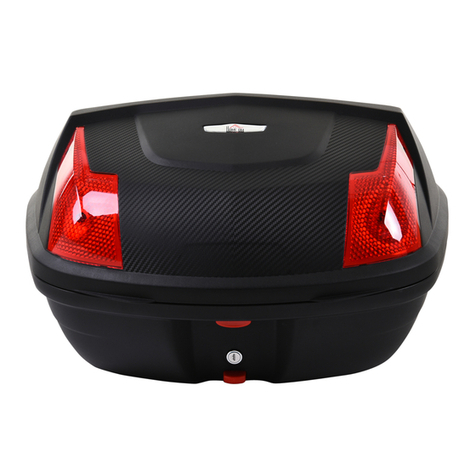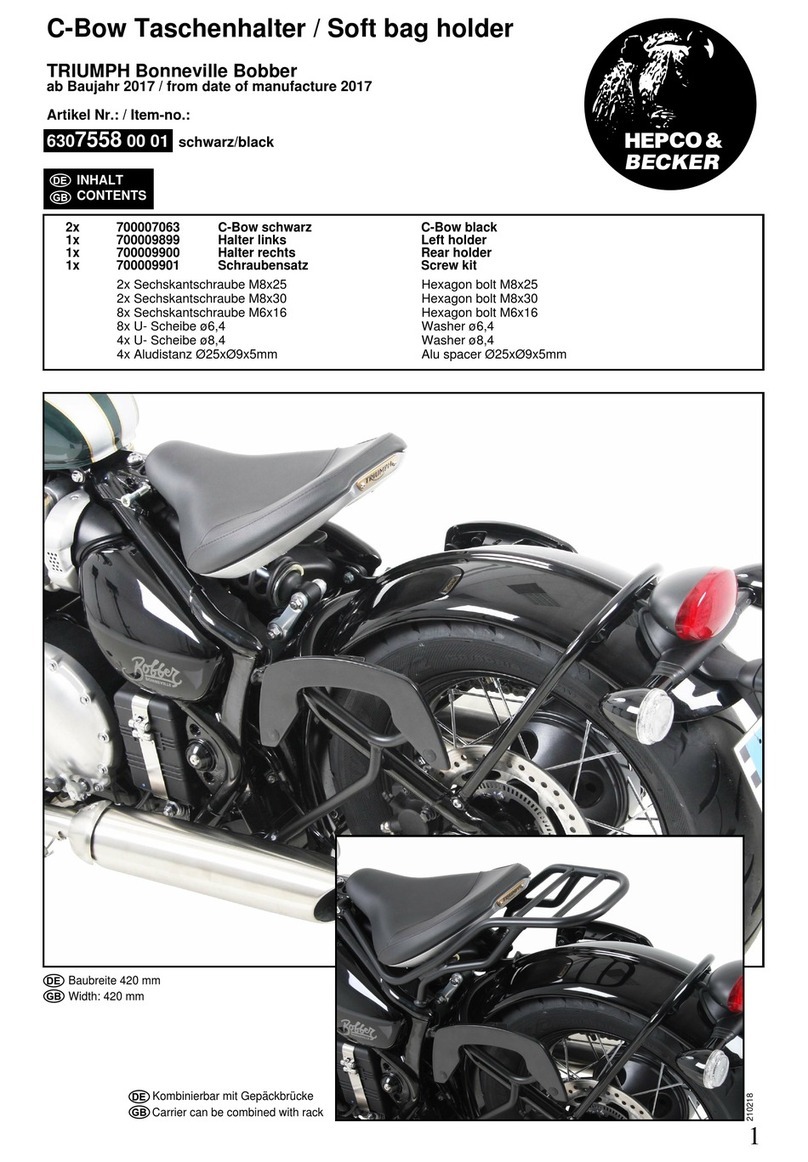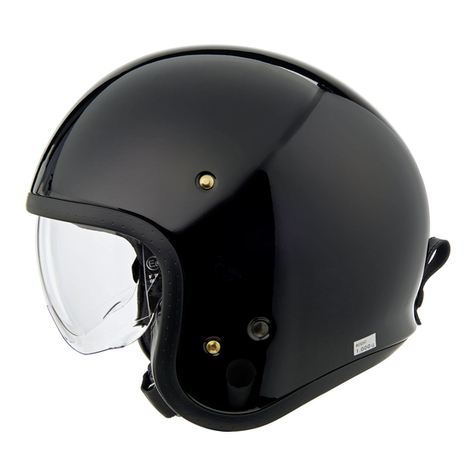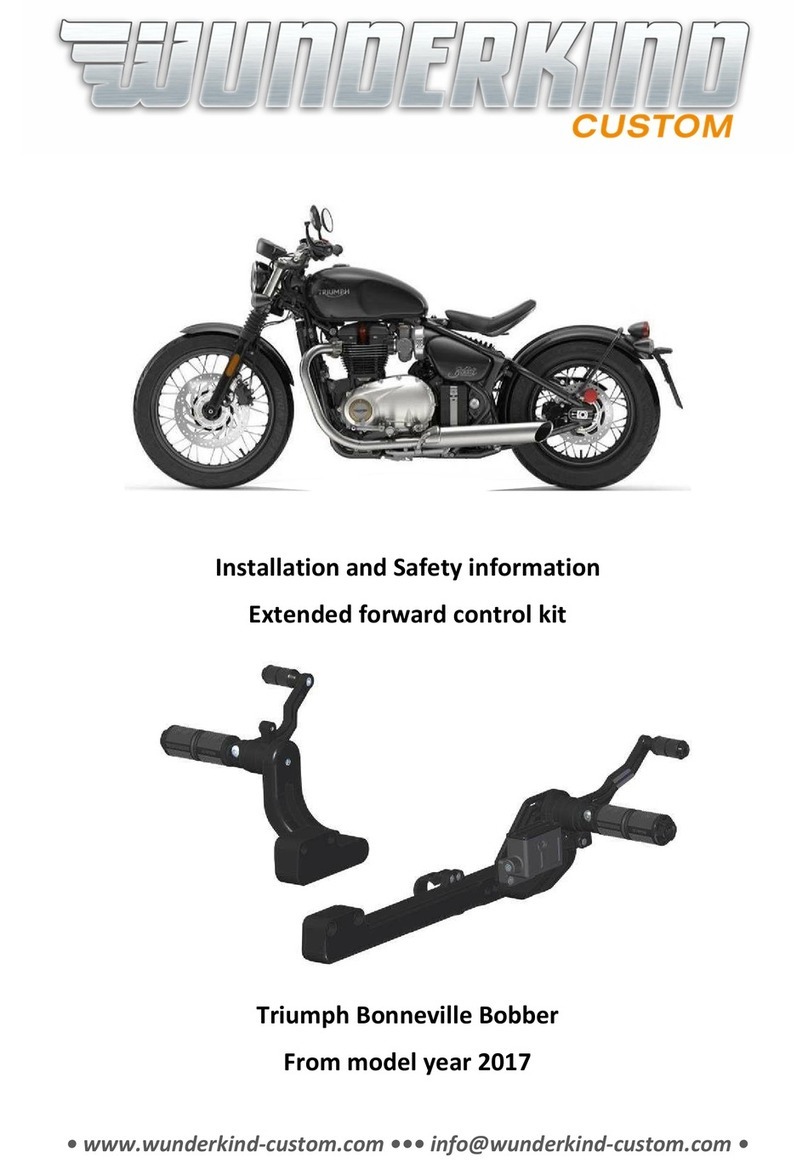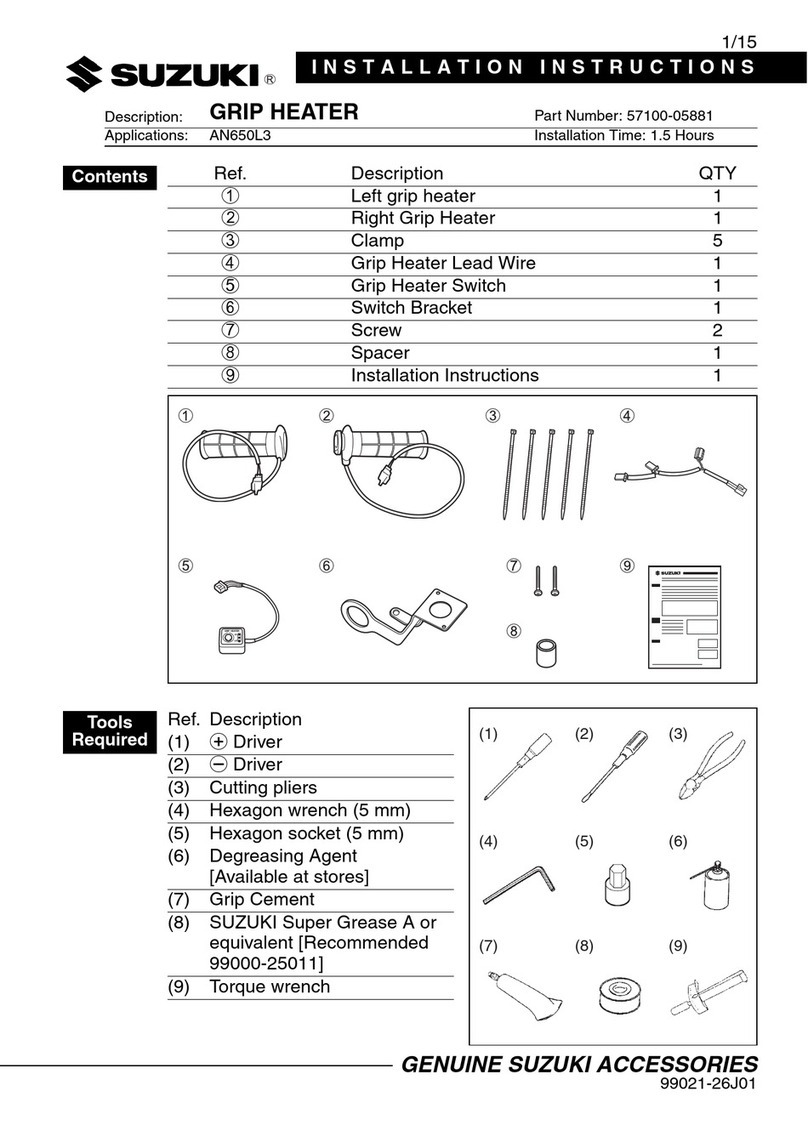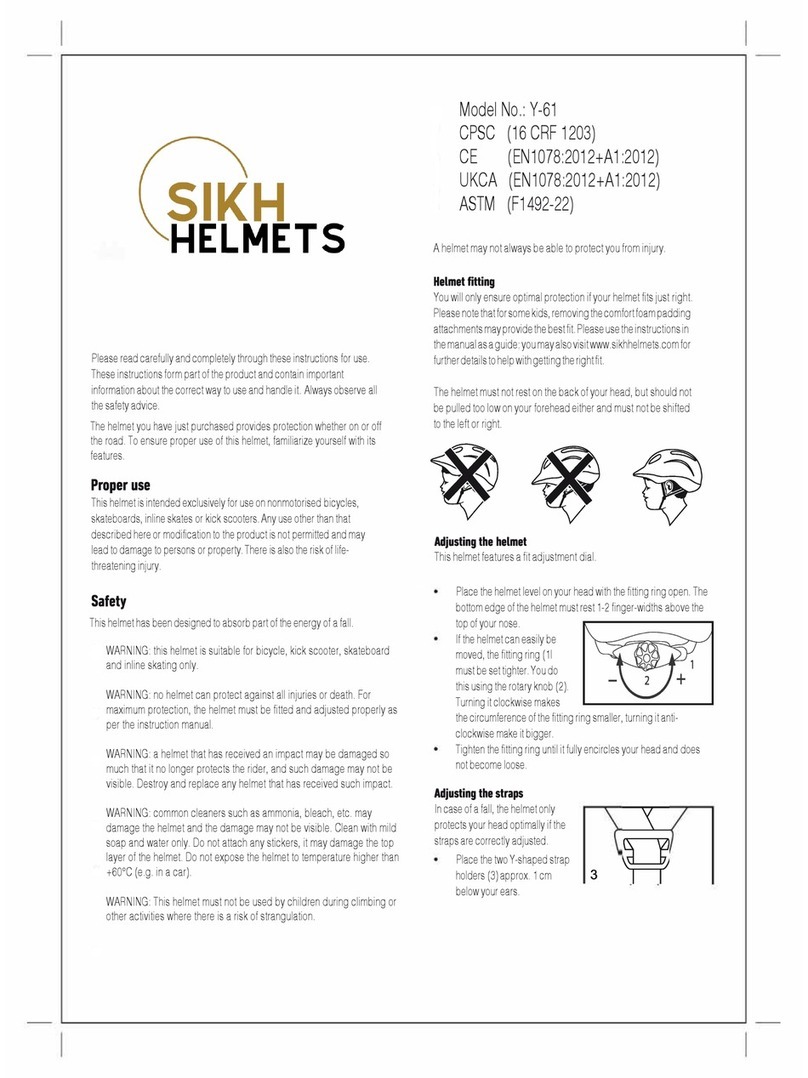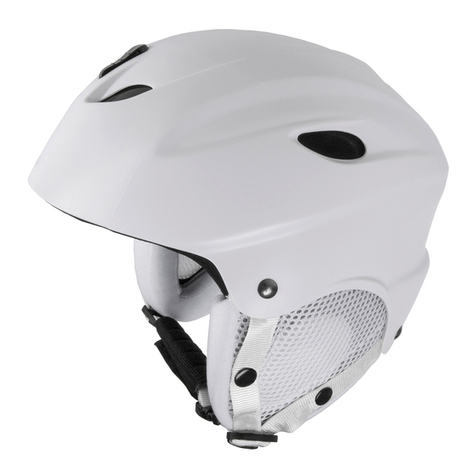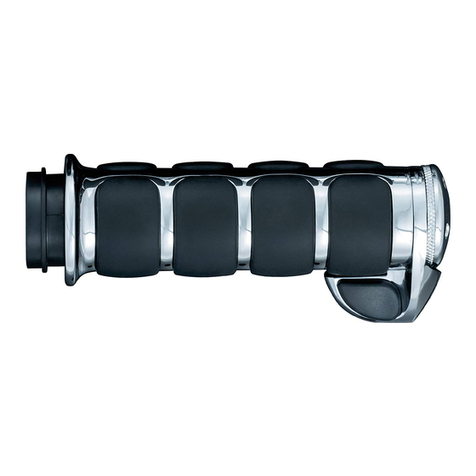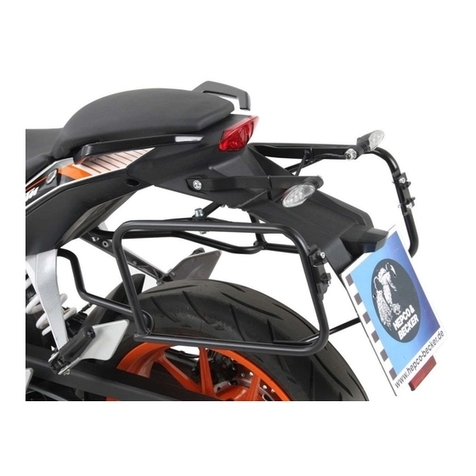
WARNINGS and INSTRUCTIONS
1. This helmet is for use only with motorcycles
ridden on the street or other paved surfaces.
Never use this helmet off road, on snowmobiles,
in automobiles, etc.
2. Always ride with care. Even though this helmet
meets or exceeds many of the world’s most
demanding standards for helmet production,
no helmet can protect the wearer from all
foreseeable high or low speed impacts. All
safety equipment have limits, and you could
still sustain a head injury in an accident even
if you are wearing a helmet. However, for
maximum protection against death or permanent
impairment from a head injury, the helmet must
fit firmly on your head and the chinstrap must be
securely fastened as described in this manual.
3. The helmet is designed to absorb impact by
partial destruction of the shell and/or liner. This
damage may not be visible to you. Therefore,
if your helmet is subjected to any impact, even
if it is only dropped to the ground, the helmet
should be returned for inspection or replaced and
destroyed even if it is apparently undamaged.
If you have any doubts, and you are not sure
whether this rule applies, consult your dealer
before you use your helmet again.
4. A helmet, like all products, may wear out over
time depending on the conditions of use. Please
check your helmet every time you use it for
evidence of damage or wear. The helmet should
always fit snugly all around your head. If it is not
snug, it has become too big for you and should
be replaced. Never wear a damaged helmet. Even
if the helmet does not show any evidence of
damage or wear, we recommended the helmet to
be replaced five years after it is first purchased.
5. Make no modifications whatsoever to your
helmet. Never drill or cut any component of
the helmet. Modifications can significantly
weaken your helmet, thereby eliminating its
ability to protect you from an impact.
6. Handle your helmet carefully. Never sit on it or
drop it to the ground. Never ride with the helmet
hanging from any part of your motorcycle.
7. Never use petroleum or petroleum products,
chemicals or any other solvents to clean the
helmet, shell or visor. In addition, never expose
your helmet to the fumes of these solvents (for
example by leaving it on top of the fuel tank
cap on your motorcycle). Your helmet could be
seriously damaged by these agents, without this
damage being visible to you, thereby eliminating
its ability to protect you. Use only mild soap,
warm water, and a soft cloth to wipe your helmet
and visor clean.
8. Never apply any paint, stickers or adhesive
tape to any part of your shell or visor. They could
significantly weaken your helmet, without this
damage being visible to you, thereby eliminating
the helmet’s ability to protect you.
9 . You will experience some reduction in hearing,
peripheral vision and head movements while you
are wearing your helmet. Please ride accordingly.
10. Dry your helmet at room temperature. Never
subject it to heat in excess of 160°F/70°C,
which can occur if your helmet is stored in the
passenger compartment or trunk of a car.
11. If you ever have any comments or questions
about this helmet, please contact SHARK or your
nearest dealer.
No warranty or representation is made as
to this product’s ability to protect the user
from all foreseeable high or low speed impacts
or from any injury or death; The user of this
helmet recognizes and agrees that there are
risks inherent in motorcycle riding, including
but not limited to the risk that your helmet
cannot protect against all foreseeable high or
low speed impacts. By his/her purchase and use
of this helmet, the user expressly, voluntarily and
knowingly accepts and assumes these risks and
agrees to hold SHARK harmless to the fullest
extent permitted by law against any resulting
damages.
2
